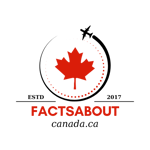A Beginner’s Guide to Canada’s Political Parties
Canada’s political landscape features several key parties, each with its own values, priorities, and policies. If you’re new to voting or just curious, here’s a beginner-friendly guide to Canada’s major federal political parties.
1. Liberal Party of Canada
-
Founded: 1867
-
Political Position: Centre-left
-
Key Priorities: Healthcare, climate action, social programs, multiculturalism
-
Leader: Mark Carney
-
Color: Red
2. Conservative Party of Canada
-
Founded: 2003 (from the merger of Progressive Conservatives & Canadian Alliance)
-
Political Position: Centre-right
-
Key Priorities: Lower taxes, economic growth, law and order, resource development
-
Leader: Pierre Poilievre
-
Color: Blue
3. New Democratic Party (NDP)
-
Founded: 1961
-
Political Position: Left-wing
-
Key Priorities: Social equality, healthcare expansion, workers’ rights, affordable housing
-
Leader: Jagmeet Singh
-
Color: Orange
4. Bloc Québécois
-
Founded: 1991
-
Political Position: Centre-left (Quebec-focused)
-
Key Priorities: Quebec sovereignty, protection of French language and culture
-
Leader: Yves-François Blanchet
-
Color: Light Blue
5. Green Party of Canada
-
Founded: 1983
-
Political Position: Centre-left
-
Key Priorities: Environmental protection, climate change, social justice
-
Leader: Elizabeth May
-
Color: Green
6. People’s Party of Canada (PPC)
-
Founded: 2018
-
Political Position: Right-wing
-
Key Priorities: Individual freedoms, lower immigration levels, economic nationalism
-
Leader: Maxime Bernier
-
Color: Purple
Final Thoughts:
Understanding Canada’s political parties helps you make an informed choice at the polls. Each party’s vision impacts policies on healthcare, taxes, trade, and more—so take the time to learn where they stand.
